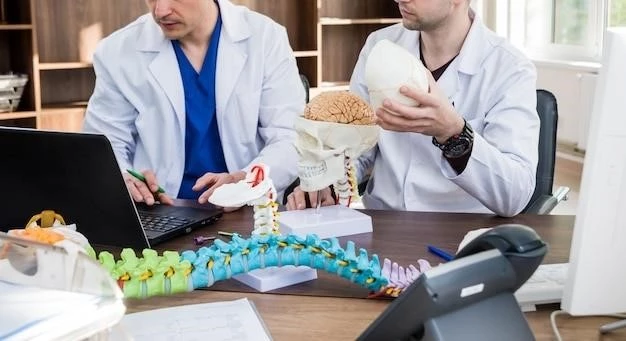Article Plan⁚ Disease ౼ Tetraploidy
Introduction to Tetraploidy
Tetraploidy is an extremely rare chromosomal anomaly characterized by having four copies of each chromosome instead of the usual two‚ leading to a total of 92 chromosomes in each cell. This condition is associated with severe congenital anomalies affecting various organ systems. While favorable prognostic implications have been observed in certain types of leukemia‚ the impact of tetraploidy in other diseases such as acute myelogenous leukemia (AML) remains unclear.
Research on tetraploidy has shown that the condition is infrequent in humans‚ with most surviving patients exhibiting mosaic patterns of tetraploidy/diploidy. Understanding the pathobiology and prognostic significance of tetraploidy in different diseases is crucial for tailored treatment approaches. Moreover‚ the association of tetraploidy with cellular senescence and chromosomal instability has implications for age-related diseases and potential therapeutic strategies.
Clinical Presentation and Symptoms

While tetraploidy is an extremely rare chromosomal anomaly‚ individuals with this condition may present with a range of severe congenital anomalies affecting various organ systems‚ including the central nervous system‚ ocular‚ cardiac‚ renal‚ and genital organs. Clinical manifestations can vary widely‚ but typically involve features such as microcephaly‚ congenital heart defects‚ cutaneous abnormalities‚ dysmorphism‚ hypotonia‚ retinopathy‚ and sensorineural hearing loss.
It is important to note that the phenotype of tetraploidy is severe‚ and the presence of four copies of each chromosome can lead to significant developmental challenges and health issues. Patients with tetraploidy may experience complex medical needs that require comprehensive management by a team of healthcare professionals experienced in dealing with rare genetic conditions.
If you suspect that an individual may have tetraploidy based on the aforementioned symptoms or genetic testing results‚ it is crucial to seek guidance from a medical specialist for proper evaluation‚ diagnosis‚ and management. Early intervention and tailored treatment strategies can help optimize the care and quality of life for individuals affected by this rare chromosomal abnormality.
Diagnosis and Testing
Diagnosing tetraploidy often involves genetic testing to confirm the presence of four copies of each chromosome in cells. This testing may be done through techniques such as karyotyping‚ fluorescence in situ hybridization (FISH)‚ or chromosomal microarray analysis to visualize and analyze the chromosomal makeup of the individual.
Consulting with a genetic counselor or a medical geneticist is crucial to discuss the implications of a tetraploidy diagnosis and to understand the potential genetic factors involved in the condition. These professionals can help guide families through the testing process‚ interpret results‚ and provide information on the recurrence risk of tetraploidy in future pregnancies.
Furthermore‚ additional diagnostic procedures may be necessary to assess the impact of tetraploidy on various organ systems and to address any associated health concerns. Imaging studies‚ such as ultrasounds‚ echocardiograms‚ and other specialized tests‚ may be recommended to evaluate the extent of structural abnormalities and guide appropriate medical management.
Prognosis and Treatment
The prognosis for individuals with tetraploidy can vary depending on the severity and extent of associated congenital anomalies. Due to the rarity and complexity of this chromosomal abnormality‚ the overall prognosis tends to be guarded‚ with many affected individuals facing significant developmental challenges and health complications throughout their lives.
When it comes to treatment‚ managing the symptoms and associated medical conditions is key in providing comprehensive care for individuals with tetraploidy. This often involves a multidisciplinary approach with specialists from various fields‚ including genetics‚ pediatrics‚ cardiology‚ neurology‚ and other relevant disciplines.
Therapeutic interventions are tailored to address the specific needs of each individual‚ aiming to improve quality of life‚ address developmental delays‚ provide supportive care for organ-specific issues‚ and monitor closely for any emerging complications. Early intervention and ongoing medical management can help optimize outcomes and ensure the best possible care for individuals with tetraploidy.
Research and Advances in Understanding Tetraploidy

Recent research has shed light on the favorable prognostic implications of tetraploidy in certain types of leukemia‚ contrasting with the unclear prognostic significance in acute myelogenous leukemia (AML). Despite progress‚ much remains unknown about the pathobiology and impact of tetraploidy on various diseases.
Studies have explored the role of tetraploidy in neoplastic progression and its association with cellular senescence. The understanding of how tetraploidy influences disease progression on a molecular level continues to evolve‚ providing insights into potential therapeutic targets and diagnostic strategies.
Furthermore‚ investigations into the genetic mechanisms underlying tetraploidy/diploidy mosaicism have revealed complexities in chromosomal instability and its association with various health conditions. These findings highlight the need for continued research to unravel the implications of tetraploidy on human health.
Impact of Tetraploidy on Human Health
The presence of tetraploidy poses a significant impact on human health‚ leading to severe congenital anomalies affecting various organ systems. Individuals with tetraploidy often face complex medical challenges and developmental issues that require specialized care and management.
Moreover‚ the association of tetraploidy with chromosomal instability and cellular senescence has implications for age-related diseases and potential therapeutic considerations. Understanding the profound impact of tetraploidy on human health is essential for tailored treatment approaches and comprehensive support for affected individuals and their families.
If you or someone you know has been diagnosed with tetraploidy‚ seeking guidance from healthcare professionals experienced in managing rare genetic conditions is crucial. By addressing the unique health needs associated with tetraploidy‚ individuals can receive appropriate care to improve their quality of life and well-being.
Support and Resources for Individuals with Tetraploidy
Being diagnosed with tetraploidy can be overwhelming‚ but there are support systems and resources available to help individuals and families navigate this rare chromosomal anomaly. Seeking support from patient advocacy groups‚ genetic counseling services‚ and specialized healthcare providers can offer valuable guidance and emotional assistance.
Connecting with other families who have experience with tetraploidy can provide a sense of community and understanding. Online forums‚ support groups‚ and social media networks dedicated to rare genetic conditions can be beneficial in sharing experiences‚ knowledge‚ and coping strategies.
Furthermore‚ accessing reliable information from reputable sources‚ such as genetic associations‚ medical centers specializing in genetic disorders‚ and academic research institutions‚ can enhance your understanding of tetraploidy and help you make informed decisions regarding treatment options and long-term care.
